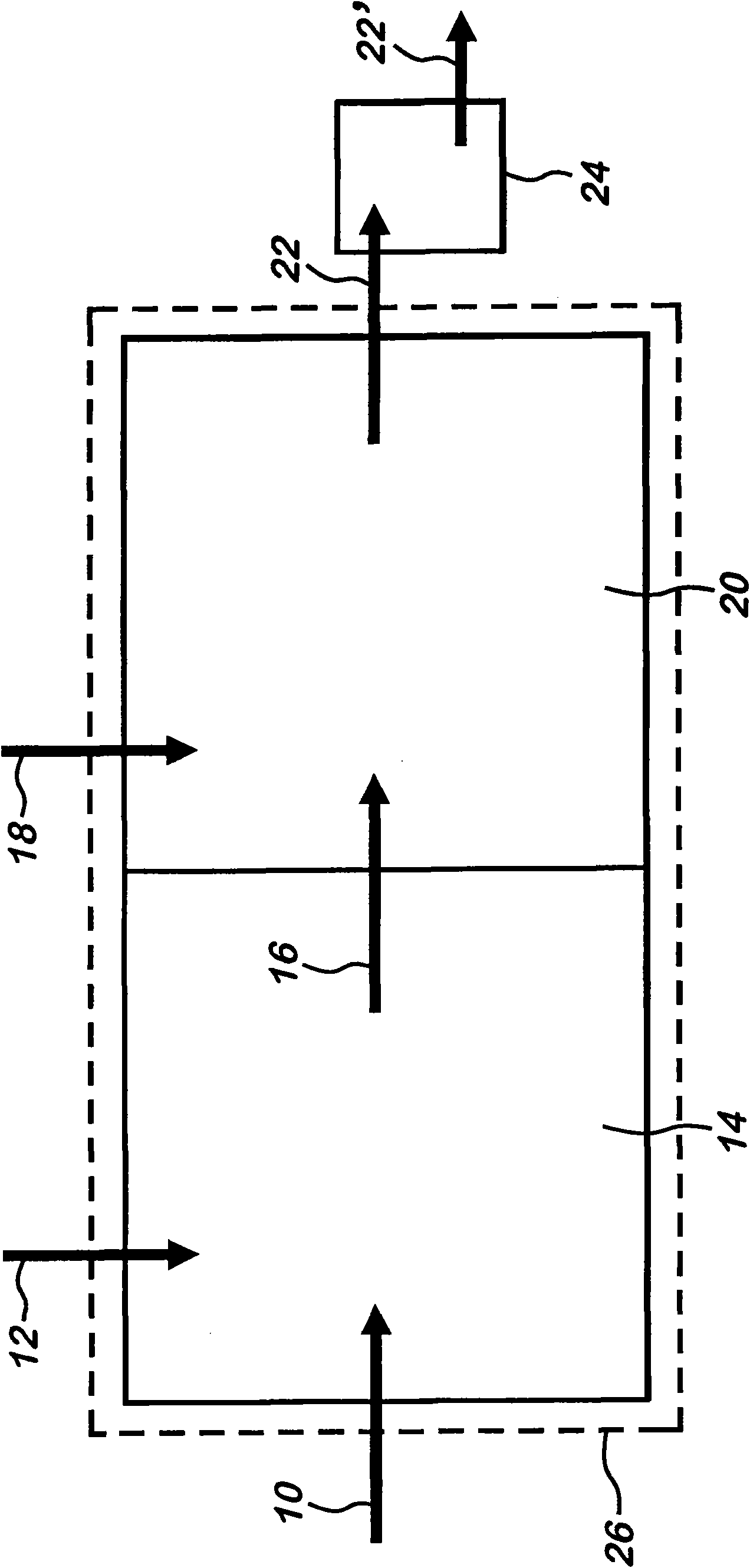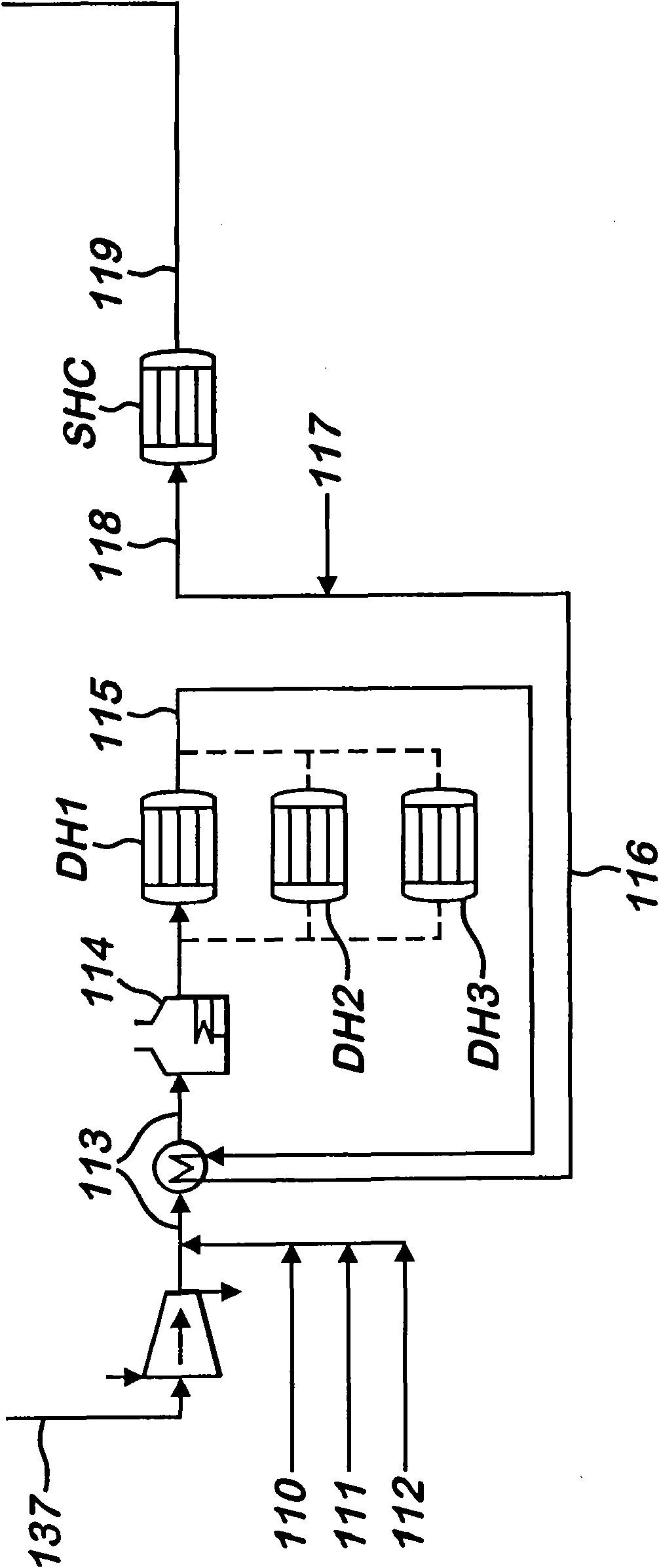Hybrid autothermal catalytic process for converting alkanes to alkenes and catalysts useful for same
A catalyst, alkane technology, applied in the direction of carbon compound catalyst, physical/chemical process catalyst, metal/metal oxide/metal hydroxide catalyst, etc., can solve problems such as deactivation of chromium-based catalysts
- Summary
- Abstract
- Description
- Claims
- Application Information
AI Technical Summary
Problems solved by technology
Method used
Image
Examples
Embodiment
[0075] The following description is about figure 2 Schematic representation of the process equipment shown. Three mild oxidant shift reactors (SOC1, SOC2, SOC3), each comprising an oxidation reaction zone (not shown per se, but see figure 1 and related description above), wherein a suitable catalyst (also not shown per se, but can be found in figure 1 and related description above). One reactor at a time is operated for the conversion of propane to propylene in a heat-integrated mild oxidant conversion process. Catalyst regeneration is performed on a reactor when it is not in use, ie "offline". The mild oxidant shift reactors (SOC1, SOC2, SOC3) are automatically cycled on-line and off-line by a process control system (not shown).
[0076] The fresh (i.e. not containing any recycled material) feedstocks to the mild oxidant conversion reaction zone were: propane (110), 13140 kg / hr; carbon dioxide (111), 8573 kg / hr; nitrogen (112), 5287 kg / hr Hour. In addition to fresh f...
PUM
 Login to View More
Login to View More Abstract
Description
Claims
Application Information
 Login to View More
Login to View More - R&D
- Intellectual Property
- Life Sciences
- Materials
- Tech Scout
- Unparalleled Data Quality
- Higher Quality Content
- 60% Fewer Hallucinations
Browse by: Latest US Patents, China's latest patents, Technical Efficacy Thesaurus, Application Domain, Technology Topic, Popular Technical Reports.
© 2025 PatSnap. All rights reserved.Legal|Privacy policy|Modern Slavery Act Transparency Statement|Sitemap|About US| Contact US: help@patsnap.com



